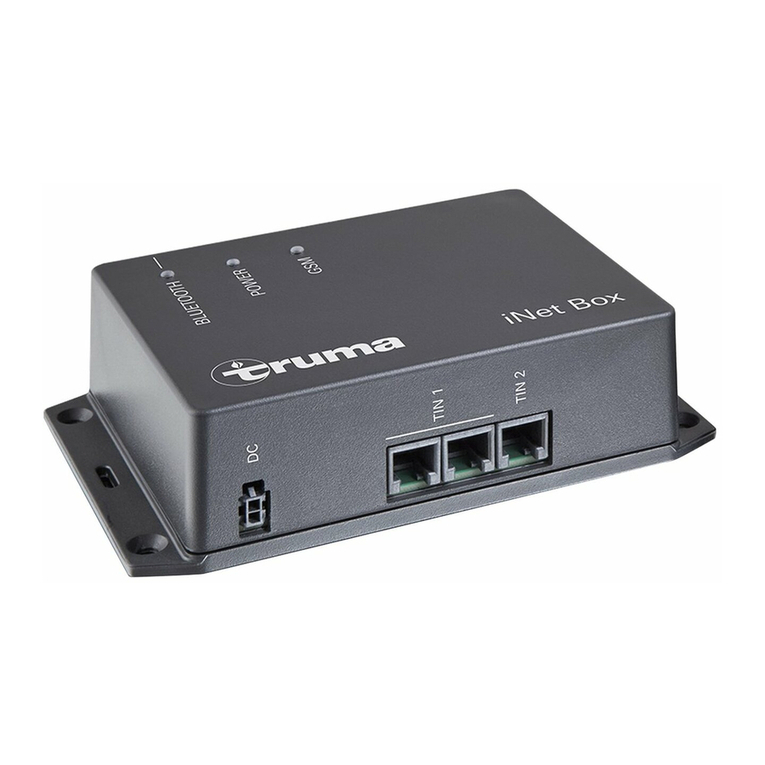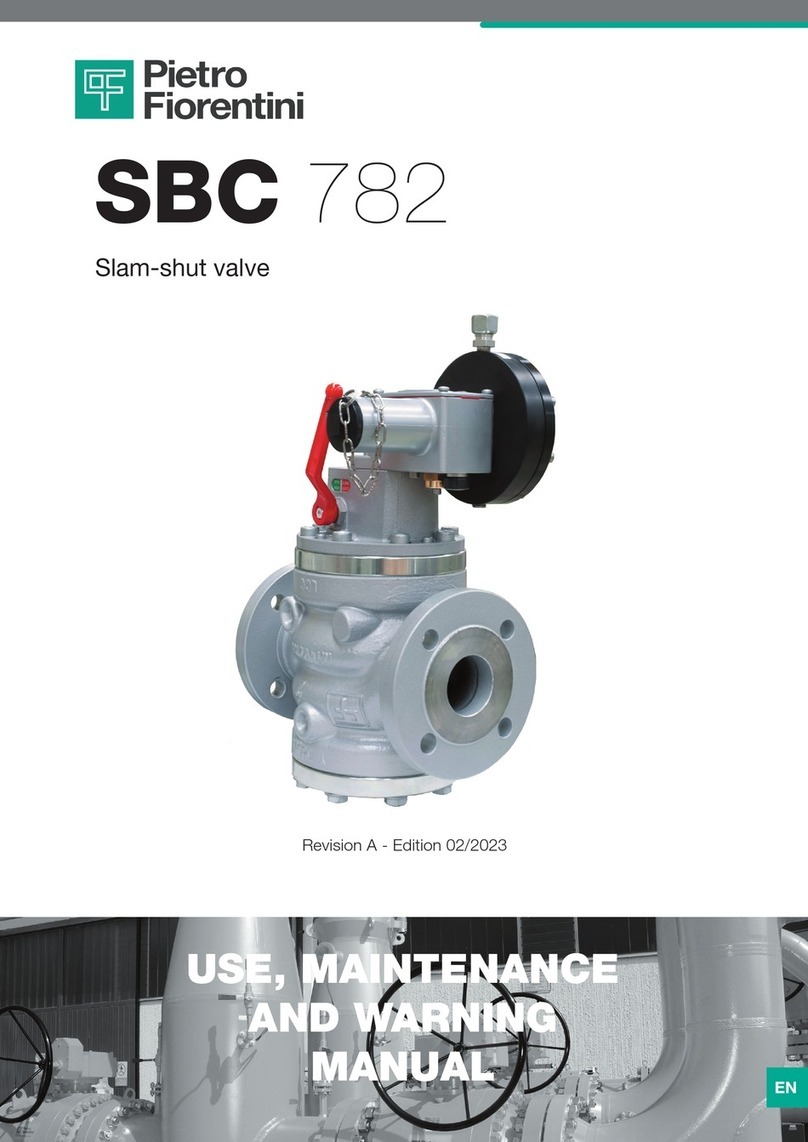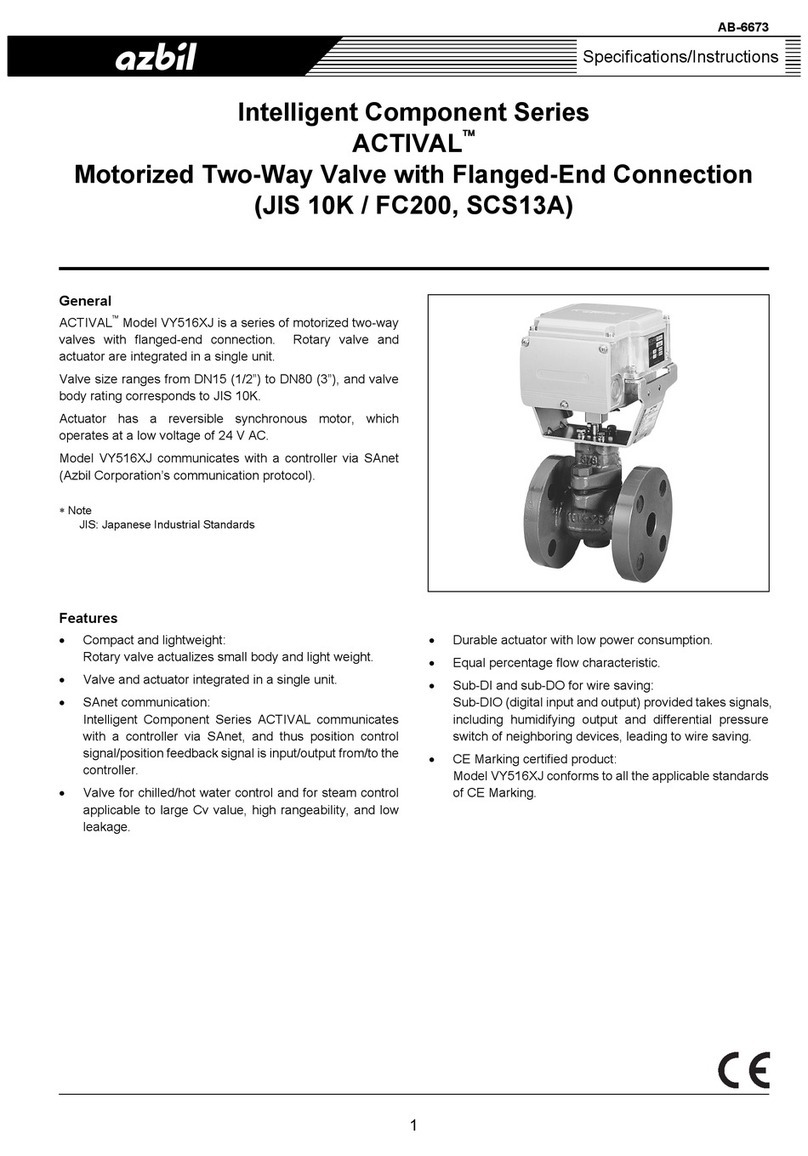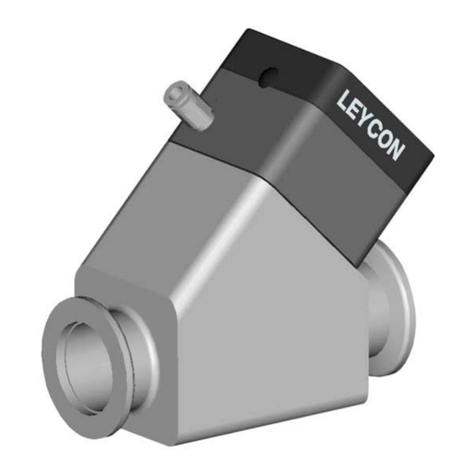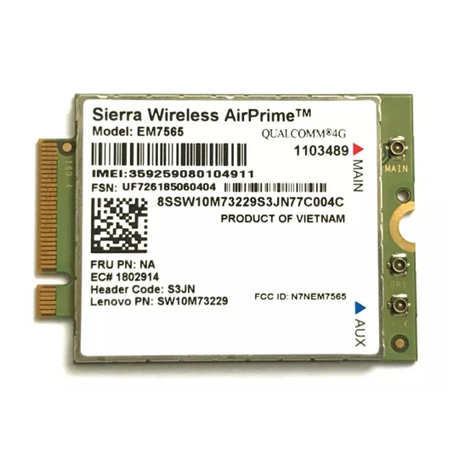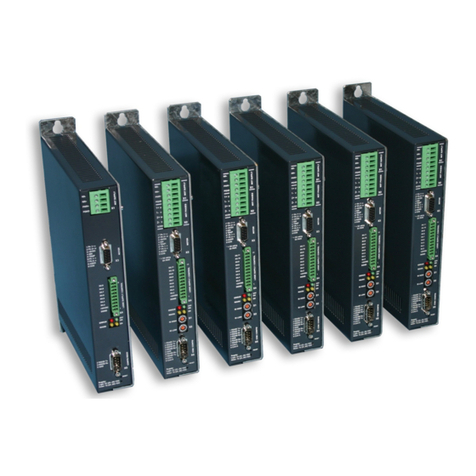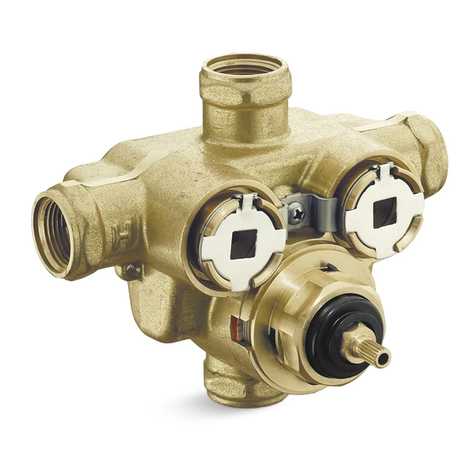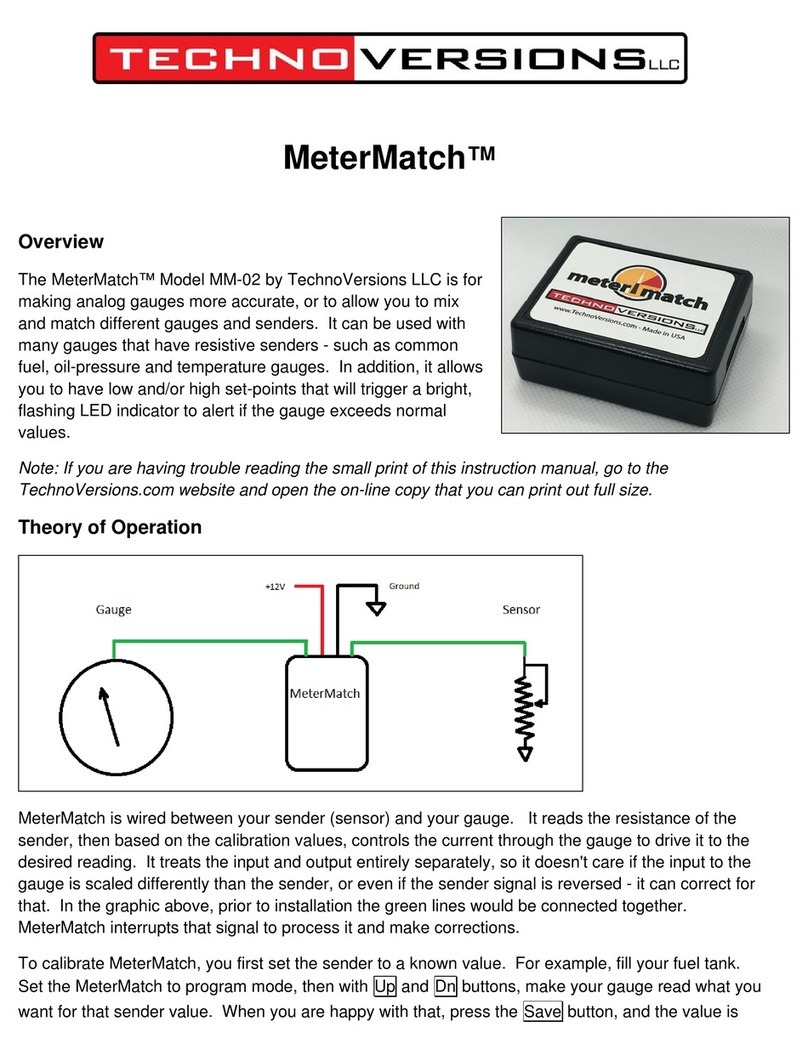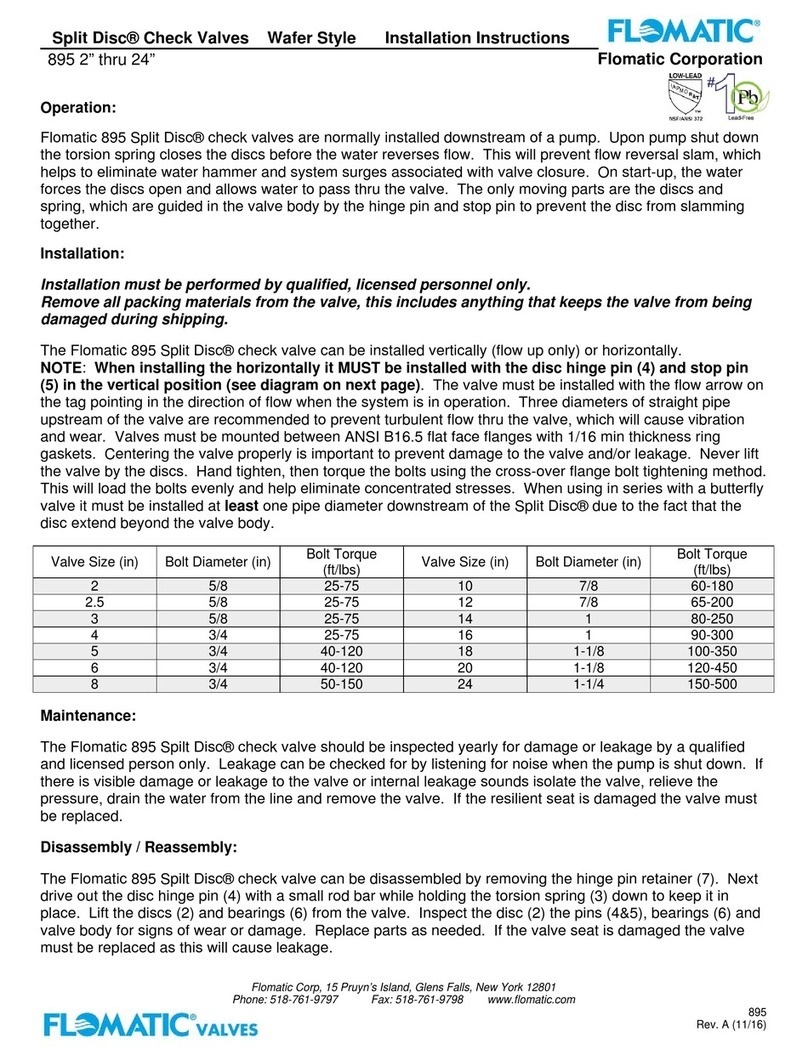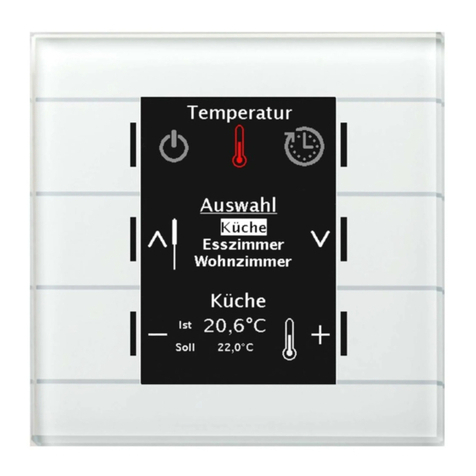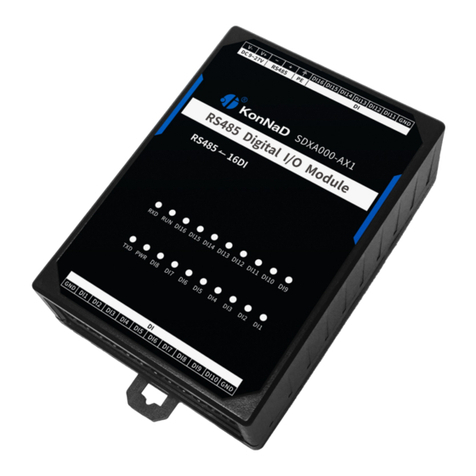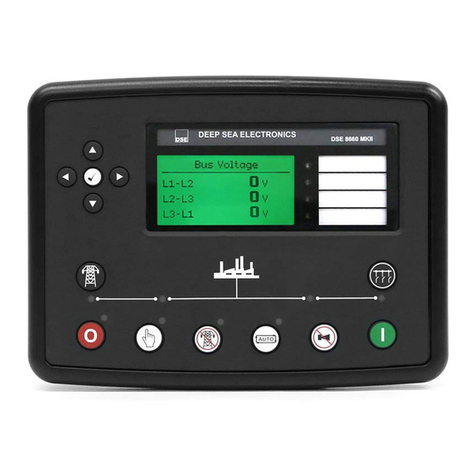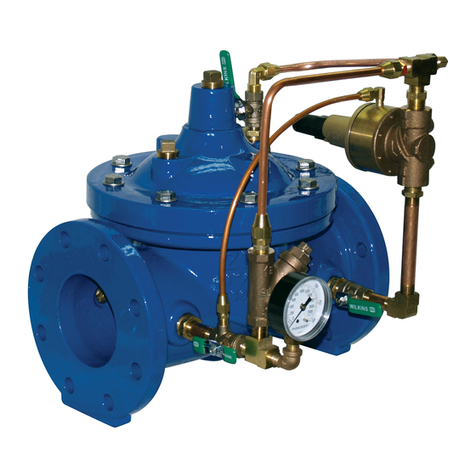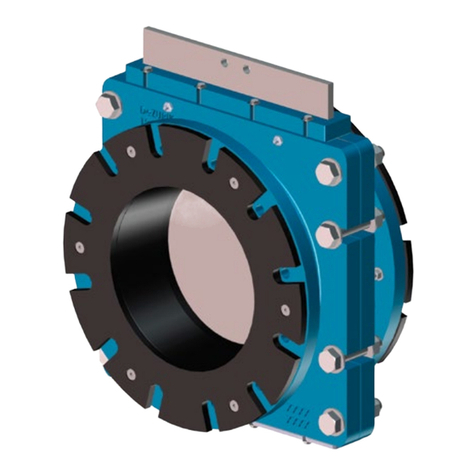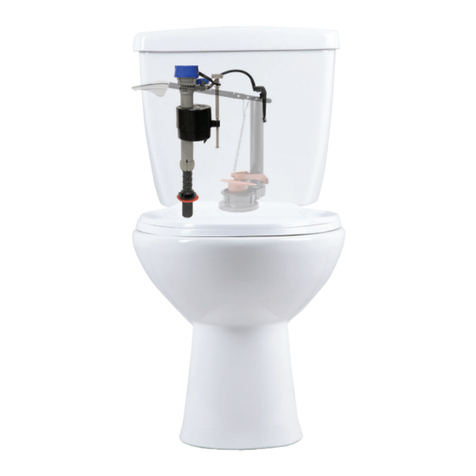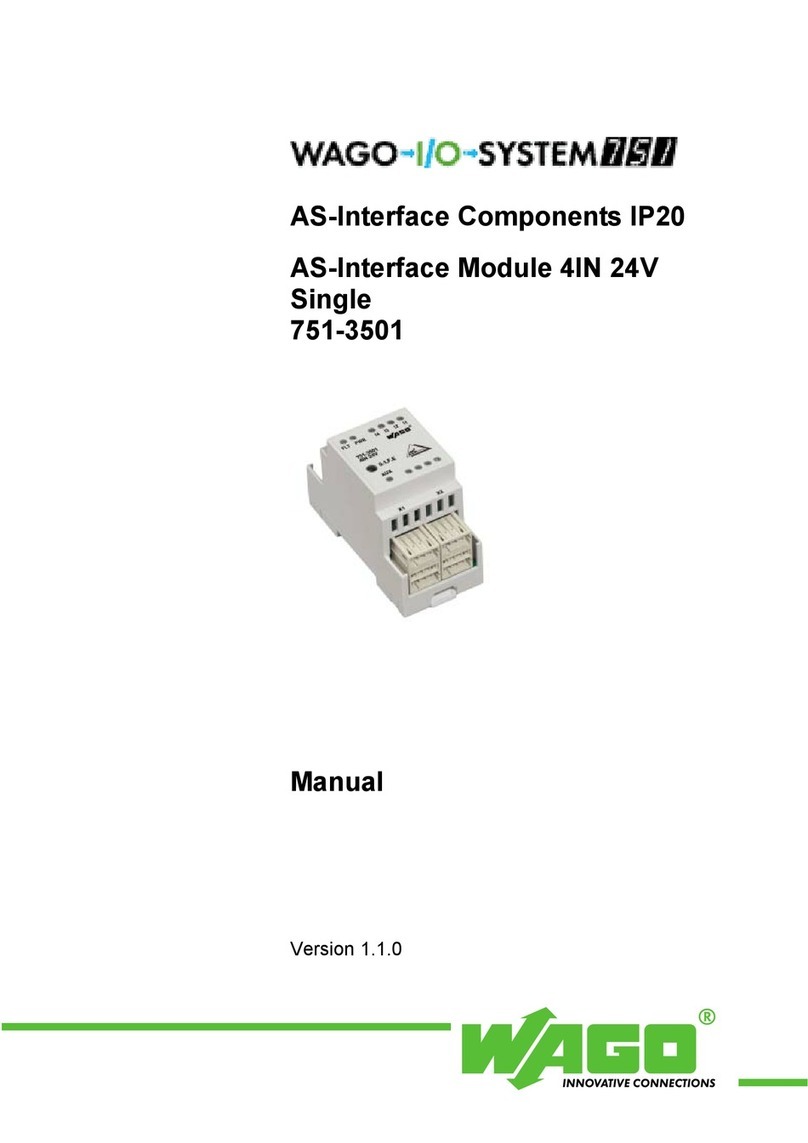
ITALIANO
troppo presto lasciando i carrelli parzialmente aperti o chiusi.
I tempi regolari di apertura o chiusura sono di circa 10-20 secondi, comunque la centralina è tarata
anche per staccare la pompa dopo circa 45 secondi, questo per evitare di scaricare completamente
la batteria.
Con un pacco batteria da 1800 mAh è possibile effettuare circa 8-10 aperture-chiusure. Vi
raccomandiamo di fare attenzione che la batteria sia sempre ben carica per evitare malfunzionamenti
del circuito.
Per completare il riempimento iniziale del circuito, è necessario azionare varie volte l’impianto dei
carrelli in apertura e chiusura per permettere l’uscita totale dell’aria dalle tubazioni e dai cilindri;
il nostro circuito non ha bisogno di valvole di sfogo per l’aria, poiché la stessa, durante i cicli
di apertura e chiusura iniziali viene inviata all’interno del serbatoio dell’olio dove rimarrà senza
provocare inconvenienti.
Se durante la fase iniziale di riempimento del circuito il livello dell’olio nel serbatoio si abbassa
troppo è necessario rabboccare il livello per evitare che il pendolo aspiri aria invece che olio.
Se ben realizzato e se non ci sono perdite il circuito idraulico non ha bisogno di alcuna manutenzione,
è sufciente controllare che il livello di olio nel serbatoio (dopo aver riempito tutto il circuito)
rimanga all’incirca a metà. Prima di ogni volo vi consigliamo di controllare il buon funzionamento
dell’impianto effettuando un ciclo di apertura/chiusura.
INSTALLAZIONE CARRELLI AD OLIO
Dopo aver ssato i carrelli al modello, posizionate e ssate in fusoliera i seguenti componenti:
• distributore olio e relativo servocomando collegandoli fra loro con un’asta e una forcella
di acciaio.
• serbatoio olio, ssandolo con elastici di caucciù o fascette di nylon al supporto ricavato
nella fusoliera, ponendo fra il supporto e il serbatoio un rettangolo di gommaspugna per
ammortizzare le vibrazioni.
• pompa elettrica ad ingranaggi, ssandola al supporto ricavato nella fusoliera con fascette
metalliche o di nylon, ponendo fra il supporto e la pompa un rettangolo di gommaspugna per
ammortizzare le vibrazioni.
• centralina di comando, inserire in un tubo di gommaspugna e ssare al supporto in fusoliera
con elastici di caucciù.
• pacco batterie da 4,8 - 6 Volts 1800 mAh art. RCA/15945/000, idem come la centralina
di comando.
• i connettori a T e a croce possono essere ssati al modello o lasciati volanti.
Collegare tutta la tubazione dopo averla tagliata a misura, seguendo gli schemi riportati in questo
libretto per le terne o coppie di carrelli retrattili ad olio, fate attenzione a non collegare invertiti
la valvola unidirezionale o i tubi della pompa e del serbatoio altrimenti il circuito non funzionerà
correttamente.
Per quanto riguarda l’innesto dei tubi nei vari dispositivi e raccordi, è sufciente premere con
forza il tubo nel rispettivo attacco rapido no a quando tocca il fondo dell’attacco stesso, a questo
punto il tubo viene bloccato dalla molla interna. Per staccare il tubo basta premere l’anello esterno
di plastica o di metallo verso il corpo dell’attacco rapido allentando così la molla interna, e tirare
il tubo che si slerà dall’attacco.
Staccare dal connettore a T il tubo di ritorno serbatoio olio e dal connettore “IN” della pompa il
tubo che la collega al pendolo del serbatoio; riempire attraverso questo tubo il serbatoio stesso
con circa 100-110 cc. di olio speciale per circuiti idraulici, fornito insieme al kit, l’aria contenuta
all’interno del serbatoio uscirà attraverso il tubo di ritorno serbatoio olio. Inserire nuovamente i
due tubi nella T e nella pompa, facendo attenzione a non invertirli.
Collegate il connettore elettrico della pompa e la batteria da 4,8-6 Volts ai rispettivi connettori
della centralina. Con una prolunga a Y collegate la centralina e il servocomando che azionerà il
distributore olio al canale della ricevente assegnato al comando chiusura/apertura carrelli.
Accendete il radiocomando e azionate la leva di comando dei carrelli, la pompa partirà aspirando
olio dal serbatoio per riempire tutto il circuito. Quando i carrelli arriveranno a ne corsa sia in
apertura che chiusura la centralina elettronica sentirà il maggiore
sforzo della pompa (segnalato dall’accensione del led rosso) e
staccherà il circuito; la centralina è già tarata in fabbrica, comunque
la sensibilità può essere regolata tramite un potenziometro:
girando in senso orario il potenziometro si aumenta la sensibilità del
circuito, quindi la pompa verrà staccata al minimo sforzo,
al contrario girando il potenziometro in senso antiorario si diminuirà
la sensibilità del circuito, quindi la pompa verrà staccata durante un
assorbimento di corrente maggiore.
Questa regolazione consente di evitare che la pompa non venga staccata mai oppure venga staccata
Questo giunto permette di separare e riunire due sezioni di qualsiasi impianto idraulico (carrelli
o freni) senza alcuna perdita di pressione e di olio dal circuito.
All’interno di questo giunto sono presenti due valvole dal funzionamento automatico; mentre viene
svitata la ghiera centrale per separare le due parti del giunto, le valvole si chiudono automaticamente
per evitare la perdita di olio o di pressione.
Al contrario quando le due parti vengono unite e la ghiera centrale viene avvitata, le due valvole
si aprono per permettere nuovamente il passaggio dell’olio.
Questo giunto può essere utilizzato nei modelli che hanno il carrello principale installato nell’ala
o nelle semiali smontabili dalla fusoliera.
In questi casi l’impianto idraulico può essere installato completamente in fusoliera e l’ala o le
semiali possono essere separate facilmente dalla fusoliera con il relativo carrello senza alcuna
perdita di olio dal circuito.
Art. RCA/15676/003
GIUNTO ALA-FUSOLIERA A DOPPIA VALVOLA PER IMPIANTI AD OLIO
(da acquistare separatamente)














